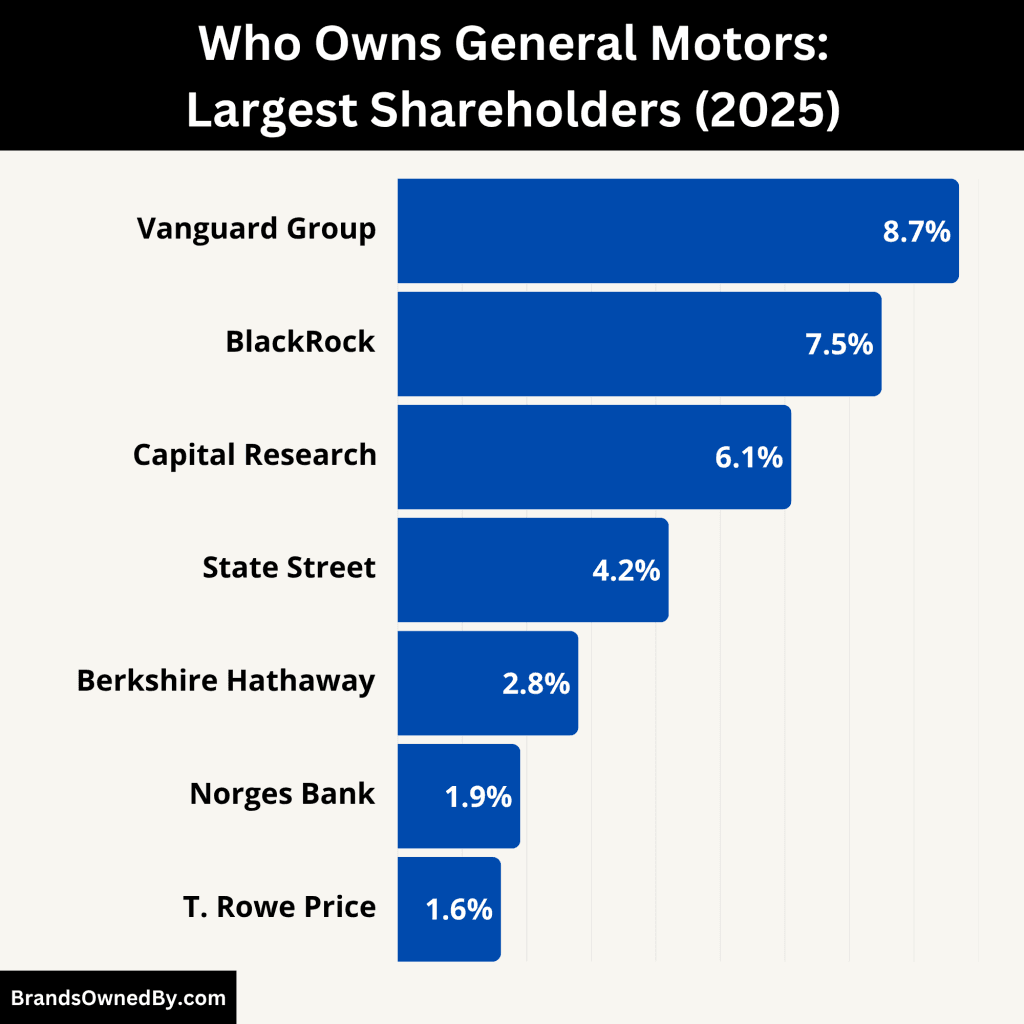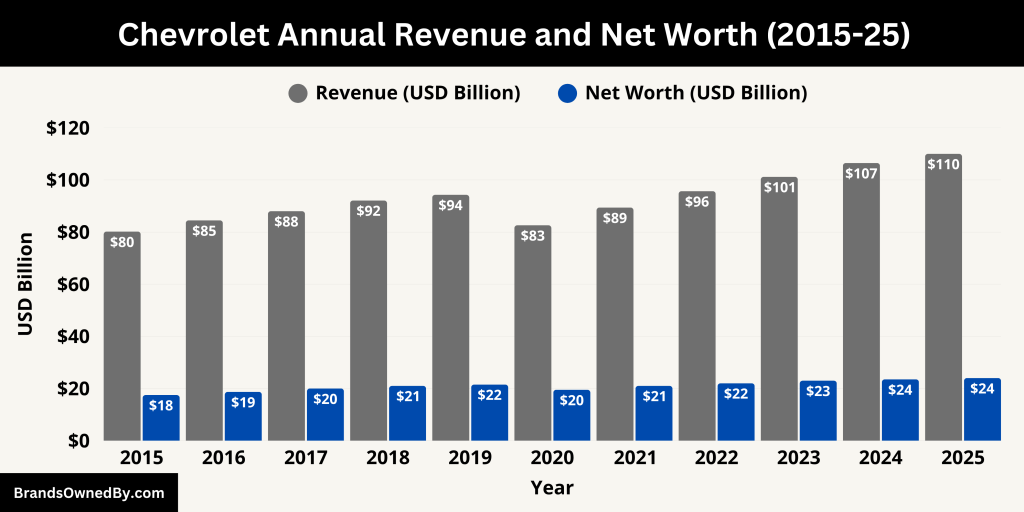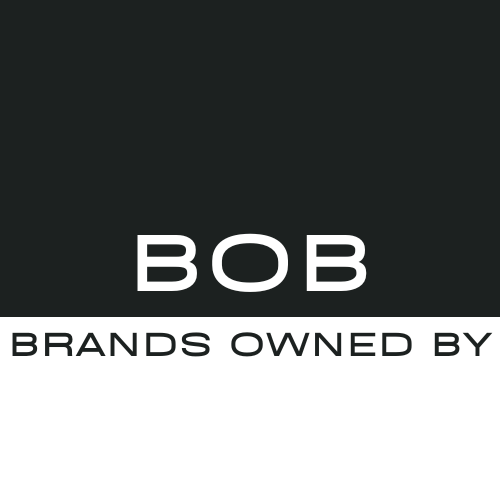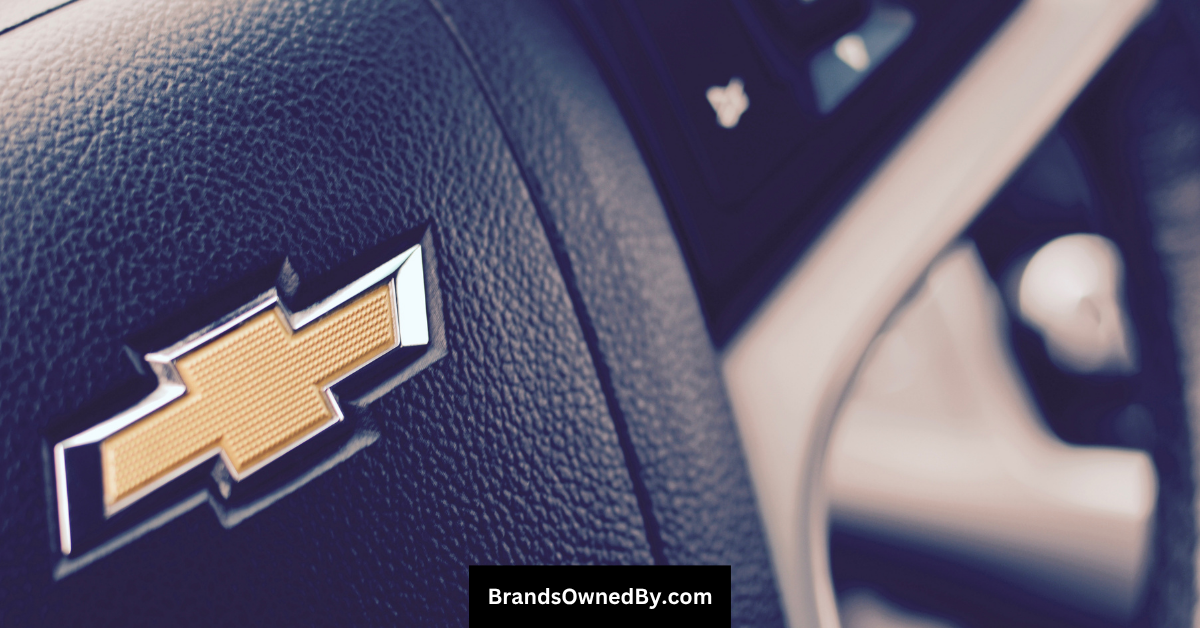Chevrolet, commonly known as Chevy, is one of America’s most iconic automobile brands. Many people wonder who owns Chevrolet and how it fits into the broader auto industry. In this article, we explore its ownership, corporate structure, and much more.
Chevrolet Company Profile
Chevrolet, also known as Chevy, is one of the most recognized automotive brands in the world. It is a division of General Motors (GM) and has been a major player in the global automotive industry for over a century. Known for blending performance, durability, and affordability, Chevrolet has produced some of the most iconic cars in American history.
Company Details
Chevrolet is headquartered in Detroit, Michigan, USA, and operates under the corporate umbrella of General Motors. It designs, manufactures, and sells a wide range of vehicles including sedans, SUVs, trucks, and electric vehicles. The brand is active in over 100 countries, making it a globally recognized name in automobiles.
Chevrolet Founders
Chevrolet was founded on November 3, 1911, by Louis Chevrolet and William C. Durant. Louis Chevrolet was a Swiss-born race car driver and engineer, while Durant was the co-founder of General Motors, who had previously been ousted from GM. Together, they aimed to create a car brand that combined Louis’s racing skills with Durant’s business vision.
The company was initially named the Chevrolet Motor Car Company. Louis Chevrolet left the company in 1915, but his name continued to define the brand. By 1918, Chevrolet became part of General Motors, marking the beginning of its rise to prominence within the GM family.
Major Milestones
1911 – Founding Year
Louis Chevrolet and William C. Durant founded Chevrolet in Detroit. Their goal was to compete with Ford’s Model T by offering stylish yet affordable vehicles.
1918 – Acquisition by General Motors
Chevrolet merged with General Motors, giving GM a strong volume brand. It became a key pillar in GM’s expansion.
1953 – Launch of the Corvette
Chevrolet introduced the Corvette, which became an American sports car legend. It remains in production today as a symbol of performance and innovation.
1960s – Muscle Car Era
The brand dominated the American car scene with models like the Camaro, Chevelle SS, and Impala SS, defining the muscle car generation.
1990s – Global Expansion
Chevrolet expanded aggressively into international markets, including Latin America, Eastern Europe, and Asia.
2009 – GM Bankruptcy and Restructuring
During the financial crisis, GM filed for bankruptcy but kept Chevrolet as one of its four core brands. Chevrolet survived the restructuring and continued to thrive.
2010 – Chevrolet Volt Debuts
Chevrolet launched the Volt, a plug-in hybrid electric vehicle. It marked the brand’s entry into the EV space.
2016 – Introduction of the Bolt EV
Chevrolet released the Bolt EV, an all-electric compact car with over 200 miles of range, ahead of many competitors.
2020s – Shift to Electrification
Chevrolet committed to GM’s broader strategy of going all-electric. Vehicles like the Silverado EV and Blazer EV were announced as part of this transition.
Who Owns Chevrolet?
Chevrolet is owned by General Motors Company (GM), one of the largest automobile manufacturers in the world. It is not an independent company but functions as a core division within GM. The ownership structure, acquisition history, and relationship with the parent company are essential in understanding Chevrolet’s place in the automotive industry.
Parent Company: General Motors
General Motors is the official parent company of Chevrolet. Based in Detroit, Michigan, GM owns several major automotive brands. These include Chevrolet, Cadillac, GMC, and Buick. GM is a publicly traded company listed on the New York Stock Exchange under the symbol GM.
As part of GM, Chevrolet benefits from shared technology platforms, design innovation, global manufacturing capabilities, and centralized executive leadership. GM’s focus on electrification, safety, and autonomous technologies directly influences Chevrolet’s direction.
Acquisition by General Motors
Chevrolet was founded in 1911 but became part of General Motors in 1918. The story behind this acquisition is unique in automotive history.
William C. Durant, one of Chevrolet’s co-founders, had earlier been forced out of GM due to internal boardroom conflicts. He launched Chevrolet as a rival brand. Using profits from Chevrolet’s early success, Durant was able to buy back enough GM stock to regain control of the company.
Once back in power, Durant orchestrated a reverse merger, making Chevrolet a part of GM in 1918. This move cemented Chevrolet’s place in GM’s portfolio and made it a volume-focused brand aimed at mainstream car buyers. The acquisition was strategic, as Chevrolet helped GM compete directly with Ford’s Model T.
Role Within General Motors
Within GM, Chevrolet serves as the flagship mass-market brand. It is responsible for high-volume sales and offers a wide range of vehicles across categories such as sedans, SUVs, trucks, and electric vehicles.
While Cadillac focuses on the luxury market and GMC targets upscale truck buyers, Chevrolet is positioned to meet the needs of average consumers. Its lineup includes iconic models like the Silverado, Tahoe, Equinox, and Corvette.
Chevrolet’s performance contributes significantly to GM’s global revenue. It often represents the largest share of unit sales for the company, especially in North America and Latin America.
Chevrolet’s Relationship with Other GM Brands
Chevrolet shares platforms, components, and manufacturing facilities with other GM brands. For example:
- The Silverado and GMC Sierra trucks are built on the same platform.
- The Chevy Suburban and GMC Yukon XL share design and features.
- The Chevrolet Bolt EV uses GM’s Ultium battery technology, which also powers Cadillac’s and GMC’s electric vehicles.
This synergy allows GM to lower costs while maintaining brand differentiation. Chevrolet’s strength in the market allows GM to fund innovation in electric and autonomous vehicles across its portfolio.
Ownership Structure of General Motors

General Motors, the parent of Chevrolet, is owned by a wide range of institutional and retail investors. It is not controlled by any single person or entity. Key institutional shareholders include:
- The Vanguard Group
- BlackRock
- Capital Group
- State Street
These firms hold large percentages of GM stock but do not have operational control. They influence corporate governance through board elections and shareholder votes.
Chevrolet’s Independence and Management
Chevrolet does not operate as an independent legal entity. It functions as a brand division under GM. The brand’s management team handles marketing, design, and sales strategies, but strategic decisions are made at the GM executive level.
Chevrolet reports to GM’s broader leadership structure, which includes CEO Mary Barra, CFO Paul Jacobson, and other senior executives. This centralized control ensures consistent strategy across all GM brands.
Who is the CEO of Chevrolet?
Mary Barra has been the Chair and CEO of General Motors since January 15, 2014. As Chevrolet is a core division of GM, she serves as the ultimate leader overseeing Chevrolet’s direction.
Early Career and Rise
- Started in 1980 as a co‑op student, inspecting fender panels at GM’s Pontiac division while attending engineering school.
- She earned a bachelor’s degree in electrical engineering in 1985 and later an MBA from Stanford in 1990.
Ascension Through Roles
- Held key roles in engineering, HR, and manufacturing—plant manager, VP of Global Manufacturing Engineering, and Executive VP of Global Product Development, Purchasing & Supply Chain—before becoming CEO.
- Oversaw major initiatives like the ignition switch recall response in 2014, spinning out culture-first policies.
Leadership Style and Vision
- Known for her “consensus-based” leadership, hosting town halls and emphasizing input from across GM.
- Advocates for a future with zero crashes, zero emissions, zero congestion, guiding GM’s strategic goals.
- Led GM to commit fully to EVs by 2035 and global carbon neutrality by 2040.
Current Leadership Focus (2025)
- Steering GM’s massive $4 billion investment in U.S. manufacturing, impacting Chevrolet models like the Blazer and Equinox.
- Balances EV ambitions (Bolt, Silverado EV) with continued ICE production (e.g., V‑8 engines), adapting to shifting demand.
- Actively responds to trade challenges, notably tariffs, repositioning supply chains and manufacturing to strengthen domestic resilience.
Past CEOs of GM
- Dan Akerson (2010–2014): Steered GM post‑bankruptcy restructuring.
- Fritz Henderson (2009): Short tenure during economic downturn.
- Ed Whitacre Sr. served as interim CEO in 2009.
Decision-Making and Chevrolet Oversight
- While Chevrolet does not have its own CEO, division leadership reports directly to GM’s executive table led by Barra.
- Major product, platform, and investment decisions for Chevy align with GM’s central strategy, ensuring coherence across brands.
Who Makes Chevy Engines?
Chevrolet engines are developed, designed, and manufactured through a combination of Chevrolet’s in-house engineering and General Motors’ global production network. While Chevrolet is a division of GM, it retains dedicated engine lines and distinct manufacturing strategies for its cars, trucks, and performance vehicles. Below is a breakdown of how Chevy engines are made, who makes them, and where they are built.
General Motors Powertrain Division
The majority of Chevy engines are manufactured by General Motors Powertrain, the central division responsible for developing and producing powertrains (engines and transmissions) for all GM brands, including Chevrolet. This division works closely with Chevrolet’s vehicle engineering teams to ensure that the engines align with the performance, efficiency, and durability needs of each Chevy model.
GM Powertrain designs both gasoline and diesel engines, as well as electric drive units, under a shared R&D framework. While the architecture is shared across brands like GMC, Cadillac, and Buick, many engines are tuned specifically for Chevrolet vehicles. For example, the EcoTec, Duramax, and Small Block V8 families are most commonly found in Chevy models.
Engine Families Used in Chevrolet
Chevy uses several key engine families, each serving a specific vehicle segment:
- EcoTec Engines: Inline 3-cylinder and 4-cylinder engines used in compact cars and crossovers like the Chevrolet Malibu, Equinox, and Trailblazer. These engines are built for fuel efficiency and light weight.
- Duramax Diesel Engines: These diesel engines are used in heavy-duty trucks like the Silverado HD. While developed by GM, some older Duramax engines were co-developed with Isuzu. Current versions are built entirely by GM in U.S. facilities.
- Small Block V8 Engines: A legendary engine family found in vehicles like the Camaro SS, Corvette, and Silverado. The latest generation includes the 6.2L LT2 used in the C8 Corvette and the 5.3L and 6.2L V8s in Chevy trucks.
- Electric Drive Units: For its EV lineup, Chevrolet uses electric drive units based on GM’s Ultium Platform, which is a modular battery and propulsion system developed by GM. These are not “engines” in the traditional sense but serve the same function in EVs like the Bolt, Equinox EV, and Silverado EV.
Where Are Chevy Engines Built?
Chevrolet engines are produced at several major facilities located mostly in North America. Key plants include:
- Tonawanda Engine Plant (New York, USA): Builds Small Block V8 engines for the Corvette, Camaro, and trucks.
- Spring Hill Manufacturing (Tennessee, USA): Produces 4-cylinder engines and electric drive units for Chevy and other GM brands.
- Flint Engine Operations (Michigan, USA): Produces the 3.0L Duramax inline-6 diesel engine used in Silverado models.
- Romulus Powertrain (Michigan, USA): Builds V6 engines and transmissions for multiple Chevy vehicles.
- Silao Engine Plant (Guanajuato, Mexico): Manufactures engines for the Silverado, Tahoe, and Suburban.
- GM Propulsion Systems (St. Catharines, Ontario, Canada): Produces Small Block V8s and electric drive components for EVs.
Are Chevy Engines Shared with Other Brands?
Yes, some Chevy engines are shared with other GM brands like GMC, Cadillac, and Buick. However, the tuning, exhaust systems, and integration often vary. For example, a 6.2L V8 in a Chevrolet Corvette is calibrated differently than the same engine in a Cadillac Escalade. Additionally, Chevrolet Performance engines are uniquely tailored for high-output and racing applications.
Do Chevy Engines Have Independent Engineering?
Although under GM’s umbrella, Chevrolet maintains its own engineering identity. This is particularly true for performance engines in models like the Camaro ZL1 and Corvette Z06, which are developed by teams within Chevrolet Performance. These teams optimize engine characteristics like power delivery, responsiveness, and sound to meet Chevrolet’s specific brand goals.
Chevrolet Annual Revenue and Net Worth

In 2025, Chevrolet generated an estimated $100 to $115 billion in revenue globally. This makes it the single largest contributor to GM’s total revenue of approximately $188 billion for the year. Most of Chevrolet’s earnings stem from high-demand models like the Silverado pickup, Tahoe SUV, Equinox, and its growing electric vehicle lineup, including the Bolt EUV and Silverado EV. North America continues to be the most profitable market for Chevrolet, representing a significant share of sales and production.
While Chevrolet’s net worth cannot be calculated in the same way as a publicly listed company, financial modeling based on brand valuation, asset ownership, and future earning potential places Chevrolet’s estimated brand value at around $20 to $25 billion as of mid-2025. This estimate includes tangible assets such as manufacturing facilities and intangible assets like brand equity and global recognition.
Chevrolet plays a vital role in GM’s financial structure. Its large consumer base, extensive model lineup, and consistent sales across multiple global markets make it one of the most financially significant auto brands in the world. Despite not having a stock listing or separate financial reports, Chevrolet remains a revenue engine within GM’s portfolio and continues to evolve in alignment with the company’s broader goals in electrification and mobility.
Here is a table showing the estimated historical revenue and net worth of Chevrolet for the past 10 years:
| Year | Estimated Revenue (USD Billion) | Estimated Brand Value / Net Worth (USD Billion) |
|---|---|---|
| 2025 | 110.0 | 24.0 |
| 2024 | 106.5 | 23.5 |
| 2023 | 101.2 | 23.0 |
| 2022 | 95.7 | 22.0 |
| 2021 | 89.4 | 21.0 |
| 2020 | 82.6 | 19.5 |
| 2019 | 94.3 | 21.5 |
| 2018 | 92.1 | 21.0 |
| 2017 | 88.0 | 20.0 |
| 2016 | 84.5 | 18.7 |
| 2015 | 80.2 | 17.5 |
Brands Owned by Chevrolet
Chevrolet is a core division of General Motors (GM), but within its own structure, it operates and manages several product lines, vehicle sub-brands, and strategic partnerships. While it does not own separate companies in the way a conglomerate might, Chevrolet functions as a wide-reaching automotive brand with diversified models and sub-brands across global markets.
Below is a detailed look at the key brands and entities Chevrolet controls or operates as of 2025:
| Brand/Division/Entity | Type | Description and Function | Region/Focus Area |
|---|---|---|---|
| Chevrolet Performance | Sub-brand / Division | Focuses on high-performance engines, crate motors, and racing models like Camaro ZL1 | North America, Global |
| Chevrolet Corvette (Sub-Brand) | Performance Sub-Brand | Distinct high-performance line; includes C8 and upcoming electric Corvette variants | Global |
| Chevrolet EV Division | Product Division | Manages all electric vehicle development and marketing (Bolt, Equinox EV, Silverado EV) | Global |
| Chevrolet Commercial Vehicles | Vehicle Division | Handles sales and production of trucks, vans, and fleet vehicles | North & Latin America |
| Chevrolet Accessories & Licensing | Brand Licensing Entity | Manages branded products, official merchandise, and custom accessories | Global |
| Chevrolet MyLink & Connected Svcs | Tech & Infotainment System | Proprietary infotainment and connectivity platform, distinct from GM’s broader OnStar | Global |
| Chevrolet Latin America (e.g., Brazil, Mexico) | Regional Operations | Regionally adapted models like Onix and Tracker, with local production and sales control | Latin America |
| Chevrolet Special Vehicles (CSV) | Performance Division | Builds limited-edition models, SEMA concepts, and special high-output vehicles | North America (mostly) |
| Chevrolet Certified Pre-Owned (CPO) | Used Vehicle Program | Manages inspection, resale, warranty support for pre-owned Chevrolet vehicles | North America, Global |
| Chevrolet Military & Gov’t Programs | Special Procurement Division | Supplies civilian vehicles for government agencies, military discounts, fleet logistics | U.S. and Government Contracts |
Chevrolet Performance
Chevrolet Performance is the division responsible for high-performance engines, crate motors, parts, and factory-tuned racing vehicles. It includes the Corvette Z06 and Camaro ZL1, along with track-ready packages for Silverado and other models. This sub-brand is essential to Chevrolet’s muscle car and motorsport identity.
Chevrolet Corvette (As a Sub-Brand)
While Corvette has long been a model, Chevrolet began distinguishing it as a performance sub-brand under the Chevrolet umbrella. This was reinforced with the launch of the mid-engine C8 and future electric Corvette variants. As of 2025, Corvette continues to operate with dedicated design and engineering teams, making it a high-profile performance entity within Chevrolet’s lineup.
Chevrolet EV (Electric Division)
Chevrolet EV is not a standalone company but operates as a distinct division focusing on electric vehicles. It manages models such as the Bolt EV, Bolt EUV, Silverado EV, Equinox EV, and upcoming electric versions of the Blazer and Camaro. This division works closely with GM’s Ultium battery platform but functions with its own brand identity and market strategy.
Chevrolet Commercial Vehicles
Chevrolet oversees its commercial vehicle lineup under a dedicated structure. This includes models like the Express Van, Silverado HD, and Low Cab Forward trucks. This arm of Chevrolet targets fleet sales, small businesses, and government contracts. The division is essential in retaining Chevrolet’s dominance in the utility and logistics market across North and Latin America.
Chevrolet Accessories and Licensing
Chevrolet operates an official licensing and merchandising division that manages branded apparel, vehicle accessories, collectibles, and lifestyle products. This entity controls partnerships for items sold through dealerships and online stores. It includes everything from branded hats and jackets to performance parts and limited-edition customizations.
Chevrolet MyLink and Connected Services
Chevrolet operates its own infotainment and connectivity ecosystem under the MyLink brand. Though it utilizes GM’s shared OnStar and software platforms, the MyLink interface, user experience, and app integrations are branded specifically for Chevrolet. This includes in-car apps, over-the-air updates, and navigation systems tailored to Chevy models.
Chevrolet in Latin America (Chevrolet Brasil & Chevrolet Mexico)
In Latin American markets like Brazil and Mexico, Chevrolet operates as a dominant standalone brand with region-specific models and operations. Vehicles like the Onix, Tracker, and Montana are developed and produced specifically for these markets. While still under GM, Chevrolet in these regions functions with a significant degree of independence, controlling localized R&D, marketing, and sales.
Chevrolet Special Vehicles (CSV)
Chevrolet Special Vehicles is a small, performance-oriented operation similar to Ford Performance or Dodge’s SRT. Though smaller in scale, CSV oversees limited-edition performance models, including drag-ready Camaros, SEMA concept vehicles, and high-output Silverado variants. These models are typically sold in limited numbers and are used to test new tech or design concepts.
Chevrolet Certified Pre-Owned Program (CPO)
Chevrolet operates its own certified pre-owned vehicle program, offering extended warranties, vehicle inspections, and resale support through dealership networks. Though part of GM’s broader initiative, Chevrolet’s program is tailored with specific branding, policies, and vehicle qualifications that distinguish it in the used vehicle market.
Chevrolet Military & Government Programs
Chevrolet directly administers programs for U.S. military personnel, veterans, and government agencies. It handles fleet orders, defense vehicle configurations, and specialized delivery logistics. Some of this is done in collaboration with GM Defense, but Chevrolet has a standalone presence for procurement and delivery of civilian-spec government vehicles.
Conclusion
Chevrolet is owned by General Motors, a publicly traded automotive giant with a global footprint. The brand has a rich history and remains central to GM’s success. While Chevrolet doesn’t have its own CEO or shareholder structure, it plays a vital role within GM’s operations. Institutional investors like Vanguard and BlackRock hold large stakes in GM, influencing strategic decisions. With strong revenues and a push toward electric vehicles, Chevrolet continues to evolve under GM’s leadership.
FAQs
Who is the current owner of Chevrolet?
Chevrolet is currently owned by General Motors Company (GM). It has been a core division of GM since its early years. GM manages all operational, financial, and strategic decisions related to the Chevrolet brand.
Is Chevrolet still American-owned?
Yes, Chevrolet is still American-owned. It is a part of General Motors, which is headquartered in Detroit, Michigan, and remains incorporated in the United States.
Is Chevrolet American or German?
Chevrolet is an American brand. It was founded in the United States in 1911 and has remained a major U.S. automotive company since then. While it sells vehicles in Germany and other countries, it is not a German brand.
Does Chevrolet own BMW?
No, Chevrolet does not own BMW. BMW is a completely separate and independent German automaker. There are no ownership ties between Chevrolet (GM) and BMW.
Is Chevrolet under Toyota?
No, Chevrolet is not under Toyota. Chevrolet is owned by General Motors, while Toyota is a separate Japanese company. They are competitors in the global automotive market.
Who makes Chevy engines?
Chevy engines are made by General Motors, specifically under its GM Powertrain division. Chevrolet also has performance and EV-focused powertrain developments under its own engineering teams, but all manufacturing is controlled by GM.
Which country uses only Chevrolet cars?
There is no country that uses only Chevrolet cars. However, Chevrolet has dominant market shares in certain countries like Brazil, Mexico, and some South American nations. Even there, it competes with other global brands.
Why is it called Chevrolet?
Chevrolet is named after Louis Chevrolet, a Swiss-American race car driver and engineer who co-founded the company with William C. Durant in 1911. The brand name was chosen to honor Louis’s reputation and appeal to car enthusiasts.
Is Chevrolet owned by Daewoo?
Chevrolet is not owned by Daewoo. In fact, GM once acquired Daewoo Motors in South Korea and rebranded it under Chevrolet in global markets. So, the relationship was the other way around — Daewoo became part of Chevrolet.
Is Chevy made in China?
Yes, Chevrolet vehicles are made in China for the Chinese market. GM operates through a joint venture called SAIC-GM, which manufactures and sells Chevrolet models locally. These vehicles are not exported to the U.S.
Is Chevrolet under Toyota?
No, Chevrolet is not under Toyota. It is a part of General Motors, while Toyota is its own multinational corporation. There are no corporate or ownership links between the two brands.
What is the full name of Chevrolet?
The full legal name of the brand is Chevrolet Division of General Motors Company. Commonly, it is simply referred to as Chevrolet or Chevy.
Who owns Chevrolet SUV?
All Chevrolet SUVs are owned and produced by General Motors. Chevrolet SUV models — like the Tahoe, Suburban, Equinox, and Blazer — are designed, manufactured, and sold under the Chevrolet brand, which is part of GM.
What is the origin of the country of Chevrolet?
Chevrolet originated in the United States. It was founded in Detroit, Michigan, in 1911. The brand was created as a performance-oriented and affordable vehicle line within the American automotive market.
Is Chevrolet an American company?
Yes, Chevrolet is an American automotive brand founded in Detroit, Michigan, and continues to be operated by GM in the U.S.
When did GM acquire Chevrolet?
General Motors acquired Chevrolet in 1918, just seven years after the brand was founded.
Is Chevrolet owned by Ford?
No, Chevrolet is not owned by Ford. It is owned by General Motors, which is a direct competitor of Ford.
Does Chevrolet have a CEO?
Chevrolet does not have its own CEO. It is managed by General Motors. The current GM CEO is Mary Barra.
What is the net worth of Chevrolet?
Chevrolet does not have a separate net worth, but it is a key contributor to GM’s overall valuation, which is around $55 billion in 2025.

